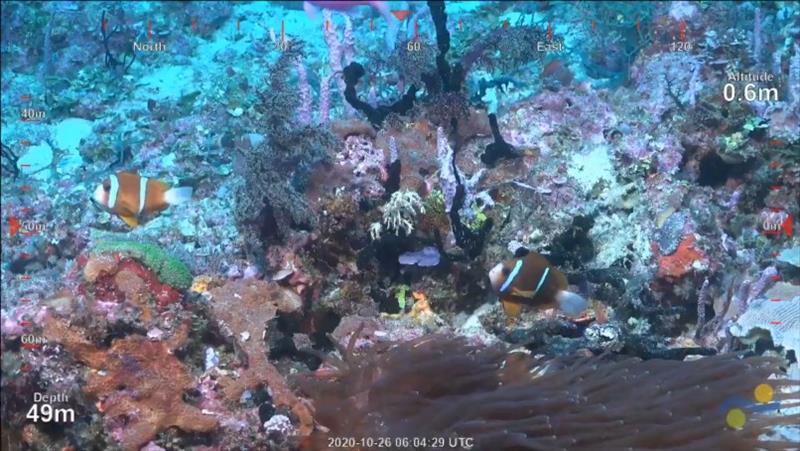
Scientists discover a 500-metre-tall coral reef on the Great Barrier Reef
by GBRMPA 5 Nov 2020 23:00 UTC

The newly discovered free-standing reef lies in deeper seas, where reef seabeds are mostly unmapped © Schmidt Ocean Institute
Australian scientists have discovered a massive detached coral reef just off Cape York on the Great Barrier Reef that's taller than the Empire State Building or the Sydney Tower.
The scientists found the reef, which is more than 500m high, as they were mapping the northern Great Barrier Reef seabed from aboard the Schmidt Ocean Institute's research vessel Falkor.
"The base of the blade-like reef is 1.5km wide, then rises 500m to its shallowest depth of only 40m below the sea surface," said Dr Tom Bridge, a Principal Investigator on the expedition who is based at the ARC Centre of Excellence for Coral Reef Studies at James Cook University (CoralCoE at JCU). Dr Bridge is also Senior Curator of Corals at the Queensland Museum.
It's the first detached reef found in more than 120 years. "This newly discovered detached reef adds to the seven other tall detached reefs in the area—all otherwise mapped in the late 1800s," Dr Bridge said.
The collection includes the reef at Raine Island, which is the world's most important green sea turtle nesting area.
Expedition leader Dr Rob Beaman from JCU said he was surprised and elated with the discovery. The Schmidt Ocean Institute's underwater robot SuBastian explored the new reef, which was videoed and live-streamed.
"To not only map the reef in 3D detail, but to also see this discovery with SuBastian is incredible," Dr Beaman said.
The finding adds to a year of underwater discoveries by the Schmidt Ocean Institute.
The year started with the discovery of deep-sea coral gardens and graveyards in Bremer Canyon Marine Park. In April, scientists found the longest recorded sea creature—a 45m siphonophore in Ningaloo Canyon—plus up to 30 new species. Discoveries in August include five undescribed species of black coral and sponges as well as Australia's first observation of rare scorpionfish in the Coral Sea and Great Barrier Reef Marine Parks.
Wendy Schmidt, co-founder of Schmidt Ocean Institute, said there are still many unknown structures and species within our oceans.
"The state of our knowledge about what's in the ocean has long been so limited," Ms Schmidt said.
"Thanks to new technologies that work as our eyes, ears and hands in the deep ocean, we have the capacity to explore like never before. New oceanscapes are opening to us, revealing the ecosystems and diverse life forms that share the planet with us."
"We know more about the surface of the moon than we know about what lies in the depths beyond our coastlines," Dr Bridge said.
"Combining mapping data and underwater imagery helps understand more about this newly discovered reef and its role within the Great Barrier Reef World Heritage Area."
The Falkor is currently on a 12-month exploration of the ocean surrounding Australia. Scientists on the voyage will continue to probe and map the depths of the northern Great Barrier Reef until mid-November.